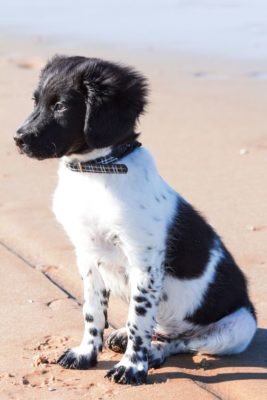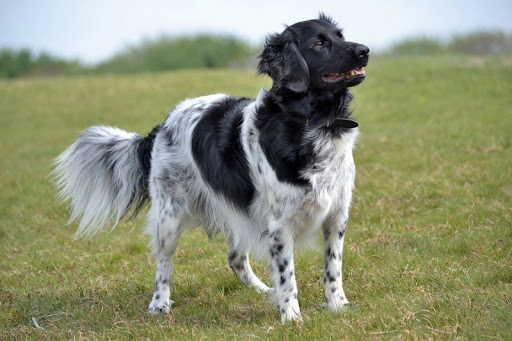Stabyhoun
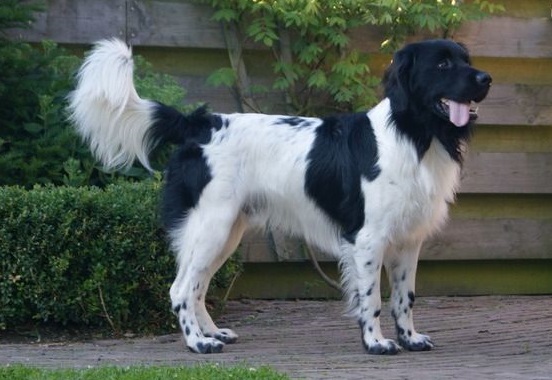
The original purpose of the Stabyhoun was to help the owner not only in hunting. The hunting and guarding instinct of the breed is well developed. Stabyhoun loves to hunt; it is his element, in which the dog has no equal. Due to his mistrustful attitude toward strangers, Stabyhoun will excellently serve as your family and home protector.
Table of Contents
Breed Information
| Another Name | Stabij, Beike, Stabijhoun, Fryske Stabij |
| Origin | Netherlands |
| Height | Males 50-54 cm Females 47-50 cm |
| Weight | 20-25 kg |
| Fur | Medium |
| Color | Black-speckled or brown-speckled |
| Lifespan | 13-15 years |
| FCI Classification | Pointing Dogs |
| Group | Hunting dogs |
| Price | From $800 |
Breed Photos
Origin History
The origin and formation of the Stabyhoun breed are rather difficult to trace. It is known that the breed is descended from the Drent partridge dog, German spaniels, and French spaniels. The homeland of Stabyhoun is considered to be the province of Friesland in the Netherlands. In the mid-nineteenth century, Stabyhouns were mainly kept as farm dogs.
Initially, they were useful in guarding farms, exterminating rodents. They helped in the pasture and later were used for hunting small games. The name of the breed has an interesting history. The word “Stabyhoun” itself is a synthesis of the English expression “stand by”, which the Dutch have changed in their way. So we got the name for the breed, which means “stand by” or “stand by me.
During World War II, Stabyhouns were on the verge of extinction. Despite all the difficulties of that time, in 1942, the Stabyhoun was recognized as a national treasure and received its first standard. And in 1947, fans of the breed organized the Dutch Association of breeds Stabyhoun and Vetterhoun. Then all efforts were put to renew the population of the breed. Most often, the Stabyhoun can be found in its homeland. More recently, the breed has been used not only as a hunter but also as a companion. Since 2012, the breed has been quite popular in Great Britain, Denmark, Norway, and Finland.
Appearance
The Stabyhoun is an extremely well-built hunting dog. The body is stretched format with rounded ribs. The head is long and fairly narrow. The skull is dome-shaped. The transition from forehead to muzzle is smooth. The muzzle is long and tapering toward the nose lobe. The eyes are oval with an affectionate look. The color of the eyes is usually light brown or amber (too much yellow is an aberration). The ears are set low, floppy, of medium size. The neck is slightly curved.
The abdomen is moderately tightened. Strong straight back. Strong and muscular limbs. The tail is planted low, long, and fluffy. The coat is medium length, thick, and smooth to the touch. Staveyhaun fur can be frizzy. Acceptable colors: black and speckled or brown and speckled. There is also a red-and-white color variant, but it is rare in the breed.
Character
The original purpose of the Stabyhoun was to help the owner not only in hunting. The hunting and guarding instinct of the breed is well developed. Stabyhoun loves to hunt; it is his element, in which the dog has no equal. Due to his mistrustful attitude toward strangers, Stabyhoun will excellently serve as your family and home protector. He is very attached to his owner. Even if you let the Stabyhoun off the leash, he will not go anywhere without the proper command.
Stabyhoun is friendly and great with children. They are quiet towards other animals, except for small rodents. Will feel well as in an apartment on condition of long walks and a spacious house. Do not doubt that the Stabyhoun will become a true and faithful four-legged friend for you.
Care
Taking care of a Stabyhoun will not bring you much trouble. Like any hunting dog, the coat of the Stabyhoun can clean itself. That is, it is not often necessary to bathe the pet. The coat is compliant; shedding is seasonal. It will be enough to comb out the hair weekly with a blow dryer.
The main focus should be on the ears of the Stabyhoun. Due to their structure, moisture and dirt can accumulate in them, which can cause hearing impairment. To prevent the development of inflammation – inspect and clean the pet’s ears every few days. It is especially true if a Stabyhoun is used in water hunting. Claws usually become flattened on their own.
Training
Consistency and perseverance are important in the training and education of the Stabyhoun. Although the breed is known for its poised character and good temperament, the Stabyhoun tends to be stubborn. Experienced owners say that the Stabyhoun is highly intelligent and has no trouble remembering new commands. But the most important factor in training the breed is considered a relationship of trust. Without it, you won’t achieve much.
A rigid approach and aggression will also not be understood by the pet. He may shut himself off or become more nervous. Active games, a positive attitude, and patience are irreplaceable helpers of any training. Because of its energy and tendency to learn, Stabyhouns are now increasingly used for many sports.
Common Diseases
Despite a robust immune system and stamina, Stabyhoun is still at risk for such diseases:
- elbow and hip dysplasia;
- congenital heart defect;
- cerebral dysfunction;
- epilepsy;
- otitis media;
- cataract.
Nutrition
With enough exercise, the Stabyhoun expends a lot of energy, which needs to be replenished. Therefore, the pet’s diet must be balanced and contain all the necessary vitamins. Natural food consists mostly of lean meat and by-products. And if you prefer ready-made dry food, then take care of its good composition. Your veterinarian can help you make the right choice, and based on your pet’s weight and condition, he or she will be able to select the right food.
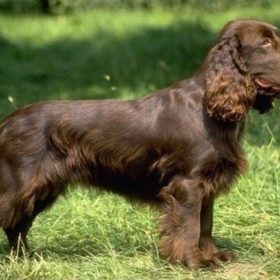 German Spaniel
German Spaniel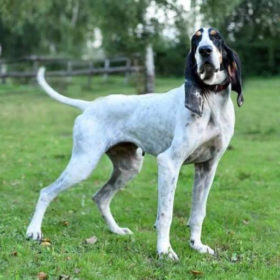 Grand Gascon Saintongeois
Grand Gascon Saintongeois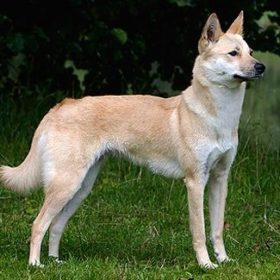 Korean Jindo
Korean Jindo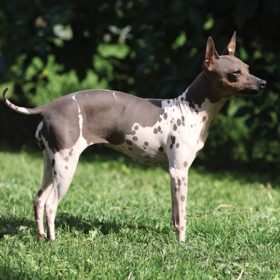 American Hairless Terrier
American Hairless Terrier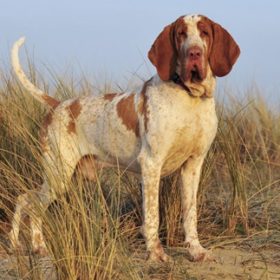 Bracco Italiano
Bracco Italiano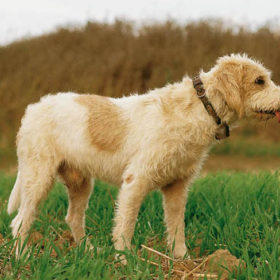 Grand Griffon Vendéen
Grand Griffon Vendéen